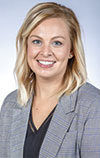1. Improve your recordkeeping
If you aren’t already doing so, start documenting information when calves are born, such as date, weight and sex. For those already keeping individual calf records, consider documenting additional information like cow udder score, cow body condition score and calf vigor. Having calving information provides opportunities to evaluate basic herd performance measures and, if you retain heifers, will be helpful in deciding which females to keep.
2. Evaluate your vaccination program
Calving season is a great time to evaluate your herd health program. Unexpected open cows, spontaneous abortions or stillborn calves might be indications of an underlying disease problem such as lepto or hardjo. Outbreaks of scours or respiratory diseases in calves may also be prevented with proper vaccination and management. Always consult with your veterinarian about your vaccine programs and herd health considerations.
3. Evaluate your nutritional program
Even if your herd health program is in top-notch shape, poor nutritional management can cause serious problems as well. Underconditioned cows can result in weak calves, poor colostrum quality and poor milking abilities. At this stage in the game, correcting body condition is a lost cause; however, testing available feedstuffs and providing proper supplementation can hopefully correct the problem prior to breeding season.
4. Implement a calving system
The Sandhills Calving System is an effective way to move pregnant cows to a new area away from young pairs that have potentially shed pathogens that cause calf scours. However, land access is often a limiting factor for many of us in this region, so many producers have adapted a modified Sandhills Calving System.
This modified system involves either moving pregnant cows less frequently than the true Sandhills Calving Method (typically every one to two weeks depending on herd size and land access) or moving cow-calf pairs within 24 hours of birth.
While it is more ideal to move pregnant cows and allow those females to calve in a new area, weather and other factors may favor moving new pairs instead. In calving barns or drylot facilities, proper management to frequently remove mud, manure and old bedding is crucial to reducing contamination. The key to any good calving system is to keep calves grouped by age to prevent transmission of pathogens from older calves to young calves. ![]()

-
Erika Lundy
- Extension Beef Program Specialist
- Iowa Beef Center - Iowa State University
- Email Erika Lundy









